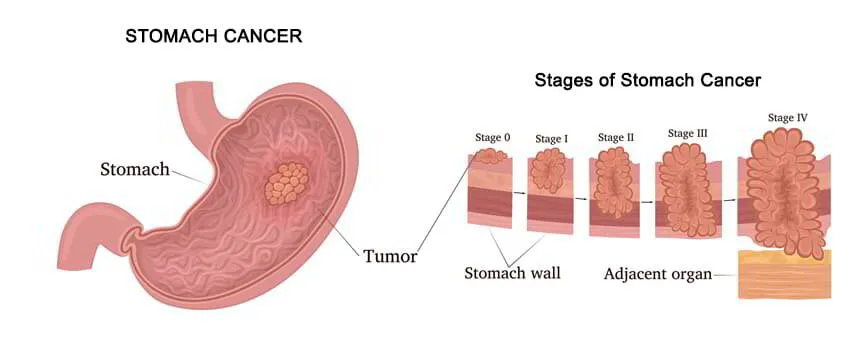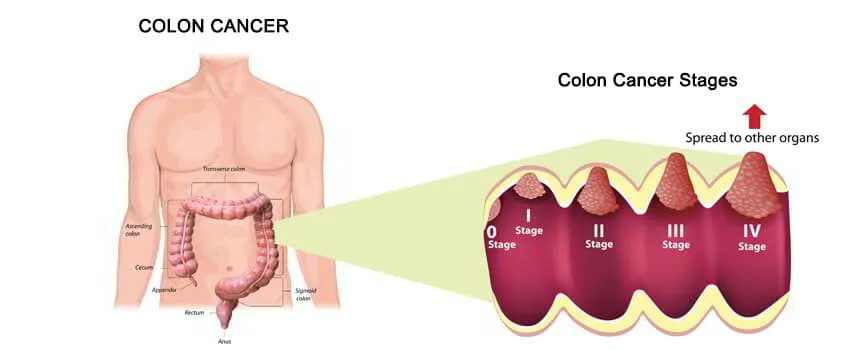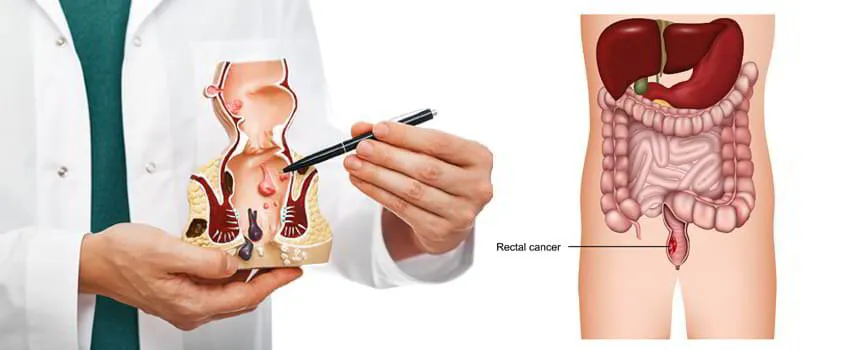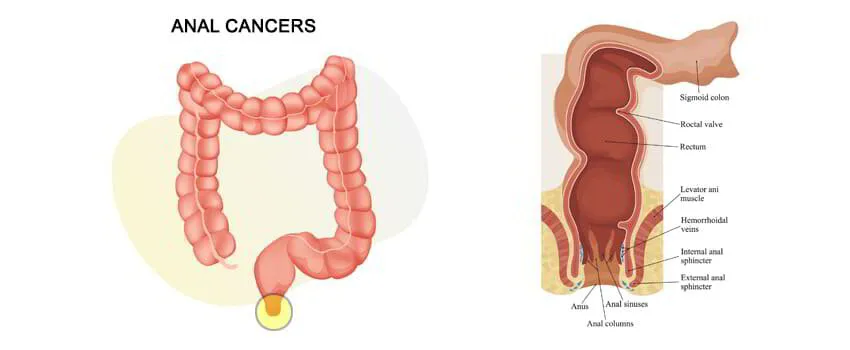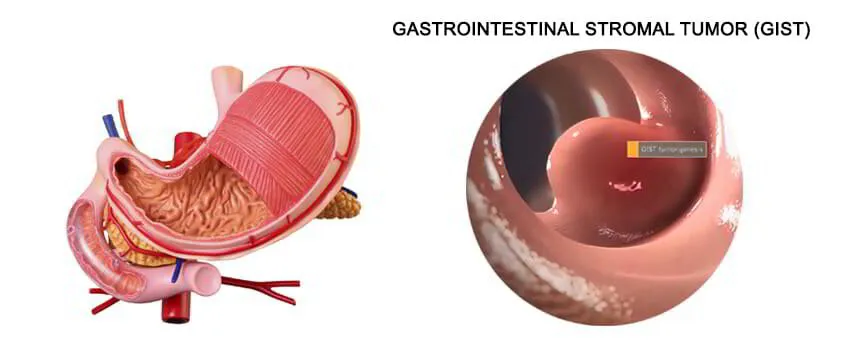Surgical Gastroenterology
Dr. Vamsi, General Surgeon, Bangalore | Patient Education | Surgical Gastroenterology
Gastrointestinal Surgery
Gastrointestinal surgery is a treatment for diseases of the parts of the body involved in digestion. This includes the esophagus (ee-sof-uh-gus), stomach, small intestine, large intestine, and rectum. It also includes the liver, gallbladder, and pancreas.
Surgery may be used to remove a cancerous or noncancerous growth or damaged part of the body, such as the intestine. It may also be used to repair a problem like a hernia (a hole or weak spot in the wall of the abdomen). Minor surgical procedures are used to screen and diagnose problems of the digestive system.
Cancers in Stomach / Radical Gastrectomy
The stomach is located in the upper abdomen and plays a central role in digesting food. When food is swallowed, it is pushed down the muscular tube called the esophagus, which connects the throat with the stomach. Then, the food enters the stomach.
Stomach cancer, also called gastric cancer, begins when healthy cells in the stomach become abnormal and grow out of control. A Tumor can be cancerous or benign. A cancerous Tumor is malignant, meaning it can grow and spread to other parts of the body. A benign Tumor means the Tumor can grow but will not spread. Cancer can begin in any part of the stomach. It can also spread to nearby lymph nodes and other parts of the body, such as the liver, bones, lungs, and a woman’s ovaries.
Cancers in Colon / Hemicolectomy
Colon cancer is a type of cancer that begins in the large intestine (colon). The colon is the final part of the digestive tract.
Colon cancer typically affects older adults, though it can happen at any age. It usually begins as small, noncancerous (benign) clumps of cells called polyps that form on the inside of the colon. Over time some of these polyps can become colon cancers.
Polyps may be small and produce few, if any, symptoms. For this reason, doctors recommend regular screening tests to help prevent colon cancer by identifying and removing polyps before they turn into cancer.
If colon cancer develops, many treatments are available to help control it, including surgery, radiation therapy and drug treatments, such as chemotherapy, targeted therapy and immunotherapy. Colon cancer is sometimes called colorectal cancer, which is a term that combines colon cancer and rectal cancer, which begins in the rectum.
Cancers in Rectum
Rectal cancer is cancer that begins in the rectum. The rectum is the last several inches of the large intestine. It starts at the end of the final segment of your colon and ends when it reaches the short, narrow passage leading to the anus.
Cancer inside the rectum (rectal cancer) and cancer inside the colon (colon cancer) are often referred to together as "colorectal cancer."
While rectal and colon cancers are similar in many ways, their treatments are quite different. This is mainly because the rectum sits in a tight space, barely separated from other organs and structures. The tight space can make surgery to remove rectal cancer complex.
Cancers in Anus
- Anal cancer is a disease in which malignant (cancer) cells form in the tissues of the anus.
- Most anal cancers are related to human papillomavirus (HPV) infection.
- Signs of anal cancer include bleeding from the anus or rectum or a lump near the anus.
- Tests that examine the rectum and anus are used to diagnose anal cancer.
- Certain factors affect the prognosis (chance of recovery) and treatment options.
Tumors in Liver / Hepatectomy
Liver Tumor is cancer that begins in the cells of your liver. Your liver is a football-sized organ that sits in the upper right portion of your abdomen, beneath your diaphragm and above your stomach.
Several types of cancer can form in the liver. The most common type of liver cancer is hepatocellular carcinoma, which begins in the main type of liver cell (hepatocyte). Other types of liver cancer, such as intrahepatic cholangiocarcinoma and hepatoblastoma, are much less common.
Cancer that spreads to the liver is more common than cancer that begins in the liver cells. Cancer that begins in another area of the body — such as the colon, lung or breast — and then spreads to the liver is called metastatic cancer rather than liver cancer. This type of cancer is named after the organ in which it began — such as metastatic colon cancer to describe cancer that begins in the colon and spreads to the liver.
Gastrointestinal Stromal Tumor
A gastrointestinal stromal Tumor (GIST) is a type of Tumor that occurs in the gastrointestinal tract, most commonly in the stomach or small intestine. The Tumors are thought to grow from specialized cells found in the gastrointestinal tract called interstitial cells of Cajal (ICCs) or precursors to these cells. GISTs are usually found in adults between ages 40 and 70; rarely, children and young adults develop these Tumors.
Small Tumors may cause no signs or symptoms. However, some people with GISTs may experience pain or swelling in the abdomen, nausea, vomiting, loss of appetite, or weight loss. Sometimes, Tumors cause bleeding, which may lead to low red blood cell counts (anemia) and, consequently, weakness and tiredness. Bleeding into the intestinal tract may cause black and tarry stools, and bleeding into the throat or stomach may cause vomiting of blood.
Affected individuals with no family history of GIST typically have only one Tumor (called a sporadic GIST). People with a family history of GISTs (called familial GISTs) often have multiple Tumors and additional signs or symptoms, including noncancerous overgrowth (hyperplasia) of other cells in the gastrointestinal tract and patches of dark skin on various areas of the body. Some affected individuals have a skin condition called urticaria pigmentosa (also known as cutaneous mastocytosis), which is characterized by raised patches of brownish skin that sting or itch when touched.
Spleen removel / Splenectomy
Splenectomy is a surgical procedure to remove your spleen. The spleen is an organ that sits under your rib cage on the upper left side of your abdomen. It helps fight infection and filters unneeded material, such as old or damaged blood cells, from your blood.
The most common reason for splenectomy is to treat a ruptured spleen, which is often caused by an abdominal injury. Splenectomy may be used to treat other conditions, including an enlarged spleen that is causing discomfort (splenomegaly), some blood disorders, certain cancers, infection, and noncancerous cysts or Tumors.
Splenectomy is most commonly performed using a tiny video camera and special surgical tools (laparoscopic splenectomy). With this type of surgery, you may be able to leave the hospital the same day and recover fully in two weeks.
Retroperitoneal Tumor Surgery
Retroperitoneal tumour surgery or the Retroperitoneal sarcoma surgery is conducted to treat a rare form of cancer called sarcoma that develops in the connective tissues: muscle, bone, nerves, cartilage, tendons, blood vessels and the fatty and fibrous tissues. Retroperitoneum is the area behind the peritoneum, the lining of the abdominal space that covers the abdominal organs.
Surgery is the main treatment for sarcoma, especially for the tumour in the retroperitoneal region. The tumour will be removed along with a part of the normal tissue to ensure the cancer cells are completely removed. This is done since muscles, bones, cartilages, tissues etc sometimes touch or press on surrounding organs. By removing the adjacent part of tumour the spread of cancer to healthier areas is stunted.
This is an extremely rare, tricky and risky surgery. There is also a risk of recurrence of the cancer in the same spot after 2-3 years.
Gut intestinal malrotation surgery
Gut or Intestinal malrotation is a rare congenital condition caused by incomplete rotation or even the absence of small bowel during the embryonary period. Gut malrotation in adults is very rare and those that are affected are asymptomatic.
The treatment involves a surgical procedure called Ladd’s procedure where the Ladd’s bands (fibrous stalks of peritoneal tissue that attach the cecum) are surgically divided, small intestine’s mesentery is widened, appendix is removed and the colon and cecum are then correctly placed.
| Page Contents
____________________
____________________
____________________
____________________
Gastrointestinal Surgery
Gastrointestinal surgery is a treatment for diseases of the parts of the body involved in digestion. This includes the esophagus (ee-sof-uh-gus), stomach, small intestine, large intestine, and rectum. It also includes the liver, gallbladder, and pancreas.
Surgery may be used to remove a cancerous or noncancerous growth or damaged part of the body, such as the intestine. It may also be used to repair a problem like a hernia (a hole or weak spot in the wall of the abdomen). Minor surgical procedures are used to screen and diagnose problems of the digestive system.
Cancers in Stomach / Radical Gastrectomy
The stomach is located in the upper abdomen and plays a central role in digesting food. When food is swallowed, it is pushed down the muscular tube called the esophagus, which connects the throat with the stomach. Then, the food enters the stomach.
Stomach cancer, also called gastric cancer, begins when healthy cells in the stomach become abnormal and grow out of control. A Tumor can be cancerous or benign. A cancerous Tumor is malignant, meaning it can grow and spread to other parts of the body. A benign Tumor means the Tumor can grow but will not spread. Cancer can begin in any part of the stomach. It can also spread to nearby lymph nodes and other parts of the body, such as the liver, bones, lungs, and a woman’s ovaries.
Cancers in Colon / Hemicolectomy
Colon cancer is a type of cancer that begins in the large intestine (colon). The colon is the final part of the digestive tract.
Colon cancer typically affects older adults, though it can happen at any age. It usually begins as small, noncancerous (benign) clumps of cells called polyps that form on the inside of the colon. Over time some of these polyps can become colon cancers.
Polyps may be small and produce few, if any, symptoms. For this reason, doctors recommend regular screening tests to help prevent colon cancer by identifying and removing polyps before they turn into cancer.
If colon cancer develops, many treatments are available to help control it, including surgery, radiation therapy and drug treatments, such as chemotherapy, targeted therapy and immunotherapy. Colon cancer is sometimes called colorectal cancer, which is a term that combines colon cancer and rectal cancer, which begins in the rectum.
Cancers in Rectum
Rectal cancer is cancer that begins in the rectum. The rectum is the last several inches of the large intestine. It starts at the end of the final segment of your colon and ends when it reaches the short, narrow passage leading to the anus.
Cancer inside the rectum (rectal cancer) and cancer inside the colon (colon cancer) are often referred to together as "colorectal cancer."
While rectal and colon cancers are similar in many ways, their treatments are quite different. This is mainly because the rectum sits in a tight space, barely separated from other organs and structures. The tight space can make surgery to remove rectal cancer complex.
Cancers in Anus
- Anal cancer is a disease in which malignant (cancer) cells form in the tissues of the anus.
- Most anal cancers are related to human papillomavirus (HPV) infection.
- Signs of anal cancer include bleeding from the anus or rectum or a lump near the anus.
- Tests that examine the rectum and anus are used to diagnose anal cancer.
- Certain factors affect the prognosis (chance of recovery) and treatment options.
Tumors in Liver / Hepatectomy
Liver Tumor is cancer that begins in the cells of your liver. Your liver is a football-sized organ that sits in the upper right portion of your abdomen, beneath your diaphragm and above your stomach.
Several types of cancer can form in the liver. The most common type of liver cancer is hepatocellular carcinoma, which begins in the main type of liver cell (hepatocyte). Other types of liver cancer, such as intrahepatic cholangiocarcinoma and hepatoblastoma, are much less common.
Cancer that spreads to the liver is more common than cancer that begins in the liver cells. Cancer that begins in another area of the body — such as the colon, lung or breast — and then spreads to the liver is called metastatic cancer rather than liver cancer. This type of cancer is named after the organ in which it began — such as metastatic colon cancer to describe cancer that begins in the colon and spreads to the liver.
Gastrointestinal Stromal Tumor
A gastrointestinal stromal Tumor (GIST) is a type of Tumor that occurs in the gastrointestinal tract, most commonly in the stomach or small intestine. The Tumors are thought to grow from specialized cells found in the gastrointestinal tract called interstitial cells of Cajal (ICCs) or precursors to these cells. GISTs are usually found in adults between ages 40 and 70; rarely, children and young adults develop these Tumors.
Small Tumors may cause no signs or symptoms. However, some people with GISTs may experience pain or swelling in the abdomen, nausea, vomiting, loss of appetite, or weight loss. Sometimes, Tumors cause bleeding, which may lead to low red blood cell counts (anemia) and, consequently, weakness and tiredness. Bleeding into the intestinal tract may cause black and tarry stools, and bleeding into the throat or stomach may cause vomiting of blood.
Affected individuals with no family history of GIST typically have only one Tumor (called a sporadic GIST). People with a family history of GISTs (called familial GISTs) often have multiple Tumors and additional signs or symptoms, including noncancerous overgrowth (hyperplasia) of other cells in the gastrointestinal tract and patches of dark skin on various areas of the body. Some affected individuals have a skin condition called urticaria pigmentosa (also known as cutaneous mastocytosis), which is characterized by raised patches of brownish skin that sting or itch when touched.
Spleen removel / Splenectomy
Splenectomy is a surgical procedure to remove your spleen. The spleen is an organ that sits under your rib cage on the upper left side of your abdomen. It helps fight infection and filters unneeded material, such as old or damaged blood cells, from your blood.
The most common reason for splenectomy is to treat a ruptured spleen, which is often caused by an abdominal injury. Splenectomy may be used to treat other conditions, including an enlarged spleen that is causing discomfort (splenomegaly), some blood disorders, certain cancers, infection, and noncancerous cysts or Tumors.
Splenectomy is most commonly performed using a tiny video camera and special surgical tools (laparoscopic splenectomy). With this type of surgery, you may be able to leave the hospital the same day and recover fully in two weeks.
Retroperitoneal Tumor Surgery
Retroperitoneal tumour surgery or the Retroperitoneal sarcoma surgery is conducted to treat a rare form of cancer called sarcoma that develops in the connective tissues: muscle, bone, nerves, cartilage, tendons, blood vessels and the fatty and fibrous tissues. Retroperitoneum is the area behind the peritoneum, the lining of the abdominal space that covers the abdominal organs.
Surgery is the main treatment for sarcoma, especially for the tumour in the retroperitoneal region. The tumour will be removed along with a part of the normal tissue to ensure the cancer cells are completely removed. This is done since muscles, bones, cartilages, tissues etc sometimes touch or press on surrounding organs. By removing the adjacent part of tumour the spread of cancer to healthier areas is stunted.
This is an extremely rare, tricky and risky surgery. There is also a risk of recurrence of the cancer in the same spot after 2-3 years.
Gut intestinal malrotation surgery
Gut or Intestinal malrotation is a rare congenital condition caused by incomplete rotation or even the absence of small bowel during the embryonary period. Gut malrotation in adults is very rare and those that are affected are asymptomatic.
The treatment involves a surgical procedure called Ladd’s procedure where the Ladd’s bands (fibrous stalks of peritoneal tissue that attach the cecum) are surgically divided, small intestine’s mesentery is widened, appendix is removed and the colon and cecum are then correctly placed.
Gastrointestinal Surgery
Gastrointestinal surgery is a treatment for diseases of the parts of the body involved in digestion. This includes the esophagus (ee-sof-uh-gus), stomach, small intestine, large intestine, and rectum. It also includes the liver, gallbladder, and pancreas.
Surgery may be used to remove a cancerous or noncancerous growth or damaged part of the body, such as the intestine. It may also be used to repair a problem like a hernia (a hole or weak spot in the wall of the abdomen). Minor surgical procedures are used to screen and diagnose problems of the digestive system.
Cancers in Stomach / Radical Gastrectomy
The stomach is located in the upper abdomen and plays a central role in digesting food. When food is swallowed, it is pushed down the muscular tube called the esophagus, which connects the throat with the stomach. Then, the food enters the stomach.
Stomach cancer, also called gastric cancer, begins when healthy cells in the stomach become abnormal and grow out of control. A Tumor can be cancerous or benign. A cancerous Tumor is malignant, meaning it can grow and spread to other parts of the body. A benign Tumor means the Tumor can grow but will not spread. Cancer can begin in any part of the stomach. It can also spread to nearby lymph nodes and other parts of the body, such as the liver, bones, lungs, and a woman’s ovaries.
Cancers in Colon / Hemicolectomy
Colon cancer is a type of cancer that begins in the large intestine (colon). The colon is the final part of the digestive tract.
Colon cancer typically affects older adults, though it can happen at any age. It usually begins as small, noncancerous (benign) clumps of cells called polyps that form on the inside of the colon. Over time some of these polyps can become colon cancers.
Polyps may be small and produce few, if any, symptoms. For this reason, doctors recommend regular screening tests to help prevent colon cancer by identifying and removing polyps before they turn into cancer.
If colon cancer develops, many treatments are available to help control it, including surgery, radiation therapy and drug treatments, such as chemotherapy, targeted therapy and immunotherapy. Colon cancer is sometimes called colorectal cancer, which is a term that combines colon cancer and rectal cancer, which begins in the rectum.
Cancers in Rectum
Rectal cancer is cancer that begins in the rectum. The rectum is the last several inches of the large intestine. It starts at the end of the final segment of your colon and ends when it reaches the short, narrow passage leading to the anus.
Cancer inside the rectum (rectal cancer) and cancer inside the colon (colon cancer) are often referred to together as "colorectal cancer."
While rectal and colon cancers are similar in many ways, their treatments are quite different. This is mainly because the rectum sits in a tight space, barely separated from other organs and structures. The tight space can make surgery to remove rectal cancer complex.
Cancers in Anus
- Anal cancer is a disease in which malignant (cancer) cells form in the tissues of the anus.
- Most anal cancers are related to human papillomavirus (HPV) infection.
- Signs of anal cancer include bleeding from the anus or rectum or a lump near the anus.
- Tests that examine the rectum and anus are used to diagnose anal cancer.
- Certain factors affect the prognosis (chance of recovery) and treatment options.
Tumors in Liver / Hepatectomy
Liver Tumor is cancer that begins in the cells of your liver. Your liver is a football-sized organ that sits in the upper right portion of your abdomen, beneath your diaphragm and above your stomach.
Several types of cancer can form in the liver. The most common type of liver cancer is hepatocellular carcinoma, which begins in the main type of liver cell (hepatocyte). Other types of liver cancer, such as intrahepatic cholangiocarcinoma and hepatoblastoma, are much less common.
Cancer that spreads to the liver is more common than cancer that begins in the liver cells. Cancer that begins in another area of the body — such as the colon, lung or breast — and then spreads to the liver is called metastatic cancer rather than liver cancer. This type of cancer is named after the organ in which it began — such as metastatic colon cancer to describe cancer that begins in the colon and spreads to the liver.
Gastrointestinal Stromal Tumor
A gastrointestinal stromal Tumor (GIST) is a type of Tumor that occurs in the gastrointestinal tract, most commonly in the stomach or small intestine. The Tumors are thought to grow from specialized cells found in the gastrointestinal tract called interstitial cells of Cajal (ICCs) or precursors to these cells. GISTs are usually found in adults between ages 40 and 70; rarely, children and young adults develop these Tumors.
Small Tumors may cause no signs or symptoms. However, some people with GISTs may experience pain or swelling in the abdomen, nausea, vomiting, loss of appetite, or weight loss. Sometimes, Tumors cause bleeding, which may lead to low red blood cell counts (anemia) and, consequently, weakness and tiredness. Bleeding into the intestinal tract may cause black and tarry stools, and bleeding into the throat or stomach may cause vomiting of blood.
Affected individuals with no family history of GIST typically have only one Tumor (called a sporadic GIST). People with a family history of GISTs (called familial GISTs) often have multiple Tumors and additional signs or symptoms, including noncancerous overgrowth (hyperplasia) of other cells in the gastrointestinal tract and patches of dark skin on various areas of the body. Some affected individuals have a skin condition called urticaria pigmentosa (also known as cutaneous mastocytosis), which is characterized by raised patches of brownish skin that sting or itch when touched.
Spleen removel / Splenectomy
Splenectomy is a surgical procedure to remove your spleen. The spleen is an organ that sits under your rib cage on the upper left side of your abdomen. It helps fight infection and filters unneeded material, such as old or damaged blood cells, from your blood.
The most common reason for splenectomy is to treat a ruptured spleen, which is often caused by an abdominal injury. Splenectomy may be used to treat other conditions, including an enlarged spleen that is causing discomfort (splenomegaly), some blood disorders, certain cancers, infection, and noncancerous cysts or Tumors.
Splenectomy is most commonly performed using a tiny video camera and special surgical tools (laparoscopic splenectomy). With this type of surgery, you may be able to leave the hospital the same day and recover fully in two weeks.
Retroperitoneal Tumor Surgery
Retroperitoneal tumour surgery or the Retroperitoneal sarcoma surgery is conducted to treat a rare form of cancer called sarcoma that develops in the connective tissues: muscle, bone, nerves, cartilage, tendons, blood vessels and the fatty and fibrous tissues. Retroperitoneum is the area behind the peritoneum, the lining of the abdominal space that covers the abdominal organs.
Surgery is the main treatment for sarcoma, especially for the tumour in the retroperitoneal region. The tumour will be removed along with a part of the normal tissue to ensure the cancer cells are completely removed. This is done since muscles, bones, cartilages, tissues etc sometimes touch or press on surrounding organs. By removing the adjacent part of tumour the spread of cancer to healthier areas is stunted.
This is an extremely rare, tricky and risky surgery. There is also a risk of recurrence of the cancer in the same spot after 2-3 years.
Gut intestinal malrotation surgery
Gut or Intestinal malrotation is a rare congenital condition caused by incomplete rotation or even the absence of small bowel during the embryonary period. Gut malrotation in adults is very rare and those that are affected are asymptomatic.
The treatment involves a surgical procedure called Ladd’s procedure where the Ladd’s bands (fibrous stalks of peritoneal tissue that attach the cecum) are surgically divided, small intestine’s mesentery is widened, appendix is removed and the colon and cecum are then correctly placed.
| Page Contents
____________________
____________________
____________________
____________________
Gastrointestinal Surgery
Gastrointestinal surgery is a treatment for diseases of the parts of the body involved in digestion. This includes the esophagus (ee-sof-uh-gus), stomach, small intestine, large intestine, and rectum. It also includes the liver, gallbladder, and pancreas.
Surgery may be used to remove a cancerous or noncancerous growth or damaged part of the body, such as the intestine. It may also be used to repair a problem like a hernia (a hole or weak spot in the wall of the abdomen). Minor surgical procedures are used to screen and diagnose problems of the digestive system.
Cancers in Stomach / Radical Gastrectomy
The stomach is located in the upper abdomen and plays a central role in digesting food. When food is swallowed, it is pushed down the muscular tube called the esophagus, which connects the throat with the stomach. Then, the food enters the stomach.
Stomach cancer, also called gastric cancer, begins when healthy cells in the stomach become abnormal and grow out of control. A Tumor can be cancerous or benign. A cancerous Tumor is malignant, meaning it can grow and spread to other parts of the body. A benign Tumor means the Tumor can grow but will not spread. Cancer can begin in any part of the stomach. It can also spread to nearby lymph nodes and other parts of the body, such as the liver, bones, lungs, and a woman’s ovaries.
Cancers in Colon / Hemicolectomy
Colon cancer is a type of cancer that begins in the large intestine (colon). The colon is the final part of the digestive tract.
Colon cancer typically affects older adults, though it can happen at any age. It usually begins as small, noncancerous (benign) clumps of cells called polyps that form on the inside of the colon. Over time some of these polyps can become colon cancers.
Polyps may be small and produce few, if any, symptoms. For this reason, doctors recommend regular screening tests to help prevent colon cancer by identifying and removing polyps before they turn into cancer.
If colon cancer develops, many treatments are available to help control it, including surgery, radiation therapy and drug treatments, such as chemotherapy, targeted therapy and immunotherapy. Colon cancer is sometimes called colorectal cancer, which is a term that combines colon cancer and rectal cancer, which begins in the rectum.
Cancers in Rectum
Rectal cancer is cancer that begins in the rectum. The rectum is the last several inches of the large intestine. It starts at the end of the final segment of your colon and ends when it reaches the short, narrow passage leading to the anus.
Cancer inside the rectum (rectal cancer) and cancer inside the colon (colon cancer) are often referred to together as "colorectal cancer."
While rectal and colon cancers are similar in many ways, their treatments are quite different. This is mainly because the rectum sits in a tight space, barely separated from other organs and structures. The tight space can make surgery to remove rectal cancer complex.
Cancers in Anus
- Anal cancer is a disease in which malignant (cancer) cells form in the tissues of the anus.
- Most anal cancers are related to human papillomavirus (HPV) infection.
- Signs of anal cancer include bleeding from the anus or rectum or a lump near the anus.
- Tests that examine the rectum and anus are used to diagnose anal cancer.
- Certain factors affect the prognosis (chance of recovery) and treatment options.
Tumors in Liver / Hepatectomy
Liver Tumor is cancer that begins in the cells of your liver. Your liver is a football-sized organ that sits in the upper right portion of your abdomen, beneath your diaphragm and above your stomach.
Several types of cancer can form in the liver. The most common type of liver cancer is hepatocellular carcinoma, which begins in the main type of liver cell (hepatocyte). Other types of liver cancer, such as intrahepatic cholangiocarcinoma and hepatoblastoma, are much less common.
Cancer that spreads to the liver is more common than cancer that begins in the liver cells. Cancer that begins in another area of the body — such as the colon, lung or breast — and then spreads to the liver is called metastatic cancer rather than liver cancer. This type of cancer is named after the organ in which it began — such as metastatic colon cancer to describe cancer that begins in the colon and spreads to the liver.
Gastrointestinal Stromal Tumor
A gastrointestinal stromal Tumor (GIST) is a type of Tumor that occurs in the gastrointestinal tract, most commonly in the stomach or small intestine. The Tumors are thought to grow from specialized cells found in the gastrointestinal tract called interstitial cells of Cajal (ICCs) or precursors to these cells. GISTs are usually found in adults between ages 40 and 70; rarely, children and young adults develop these Tumors.
Small Tumors may cause no signs or symptoms. However, some people with GISTs may experience pain or swelling in the abdomen, nausea, vomiting, loss of appetite, or weight loss. Sometimes, Tumors cause bleeding, which may lead to low red blood cell counts (anemia) and, consequently, weakness and tiredness. Bleeding into the intestinal tract may cause black and tarry stools, and bleeding into the throat or stomach may cause vomiting of blood.
Affected individuals with no family history of GIST typically have only one Tumor (called a sporadic GIST). People with a family history of GISTs (called familial GISTs) often have multiple Tumors and additional signs or symptoms, including noncancerous overgrowth (hyperplasia) of other cells in the gastrointestinal tract and patches of dark skin on various areas of the body. Some affected individuals have a skin condition called urticaria pigmentosa (also known as cutaneous mastocytosis), which is characterized by raised patches of brownish skin that sting or itch when touched.
Spleen removel / Splenectomy
Splenectomy is a surgical procedure to remove your spleen. The spleen is an organ that sits under your rib cage on the upper left side of your abdomen. It helps fight infection and filters unneeded material, such as old or damaged blood cells, from your blood.
The most common reason for splenectomy is to treat a ruptured spleen, which is often caused by an abdominal injury. Splenectomy may be used to treat other conditions, including an enlarged spleen that is causing discomfort (splenomegaly), some blood disorders, certain cancers, infection, and noncancerous cysts or Tumors.
Splenectomy is most commonly performed using a tiny video camera and special surgical tools (laparoscopic splenectomy). With this type of surgery, you may be able to leave the hospital the same day and recover fully in two weeks.
Retroperitoneal Tumor Surgery
Retroperitoneal tumour surgery or the Retroperitoneal sarcoma surgery is conducted to treat a rare form of cancer called sarcoma that develops in the connective tissues: muscle, bone, nerves, cartilage, tendons, blood vessels and the fatty and fibrous tissues. Retroperitoneum is the area behind the peritoneum, the lining of the abdominal space that covers the abdominal organs.
Surgery is the main treatment for sarcoma, especially for the tumour in the retroperitoneal region. The tumour will be removed along with a part of the normal tissue to ensure the cancer cells are completely removed. This is done since muscles, bones, cartilages, tissues etc sometimes touch or press on surrounding organs. By removing the adjacent part of tumour the spread of cancer to healthier areas is stunted.
This is an extremely rare, tricky and risky surgery. There is also a risk of recurrence of the cancer in the same spot after 2-3 years.
Gut intestinal malrotation surgery
Gut or Intestinal malrotation is a rare congenital condition caused by incomplete rotation or even the absence of small bowel during the embryonary period. Gut malrotation in adults is very rare and those that are affected are asymptomatic.
The treatment involves a surgical procedure called Ladd’s procedure where the Ladd’s bands (fibrous stalks of peritoneal tissue that attach the cecum) are surgically divided, small intestine’s mesentery is widened, appendix is removed and the colon and cecum are then correctly placed.
| Page Contents
| Types of Laparoscopic Surgeries
____________________
____________________
____________________
____________________











